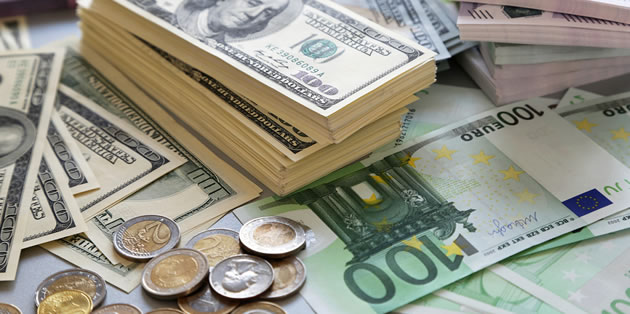- Euro previously uncertain after mixed German data – Growth and contraction equally present
- Greater support offered by German GDP printing – Forecasts met or exceeded for Q1
- US Dollar influence by Fed speech and claims last week – Sizable reduction recorded for benefit claimants
- Eurozone inflation data spread across coming week – Fed rate decision also due
Last week for the Euro was a turbulent one, with the diverse offering of domestic data serving to leave investors on the fence about the overall value of the single currency.
The US Dollar has been a similarly inconsistent option, on account of the likelihood of a Fed interest rate hike not being confirmed or denied.
Eurozone Economic News: GDP and German Ecostats made up Last Week’s EUR/USD Movement
The previous week brought little in terms of decisive data, with most of the Euro’s movements being influenced by alternately positive and negative ecostats.
In the former category were the Eurozone retail PMI printings and GDP growth rate for Q1; the PMI rose from 47.9 to 50.6 while GDP either remained positive or improved in its finalised form.
Less helpful was Germany’s falling trade surplus for April, although this too was countered by rising inflation rate postings at the end of the week.
US Dollar Affected by Fed Rate Hike Chances and Excellent Claims Data Last Week
Previous movements for the US Dollar have largely been influenced by the odds of a Fed rate hike next week. The week began on an ambiguous note when Fed Chair Janet Yellen stated that, in spite of previous poor jobs data, a June rate increase could still be on the cards.
The odds of a rate hike rose on Thursday, when the late May and early June jobless claims counts fell against forecasts.
Closing off the week was the University of Michigan confidence score for June, which fell from 94.7 to 94.3.

Future EUR, USD Forecast: Eurozone Inflation Stats and Fed Interest Rate Decision due This Week
The week to come is set to bring the announcement of the Fed’s high-impact June interest rate decision on Thursday, as well as a more evenly-spread delivery of Eurozone inflation rate results from Tuesday to Thursday.
In the former case, the US central bank is not expected to raise the interest rate in June, despite previous hints that a June rate hike could be on the way regardless of recent poor data. This conclusion has been reached for two reasons; the first is that the recent shortfall in new jobs added to the economy has likely done little to enthuse Fed officials to committing to a risky rate hike.
Also likely to stay the Fed’s hand is the looming issue of the UK’s EU Referendum vote; as the previous week has shown the debate has inspired a great deal of volatility, among both the Pound and the Euro, with fears that a ‘Brexit’ could impact the US economy to some extent.
For the most part, the finalised Eurozone inflation rate results for May are expected to be varied in their outcomes, although crucially, the high-impact Eurozone-wide printing on Thursday has been forecast to ‘improve’ from -0.2% to -0.1%.



